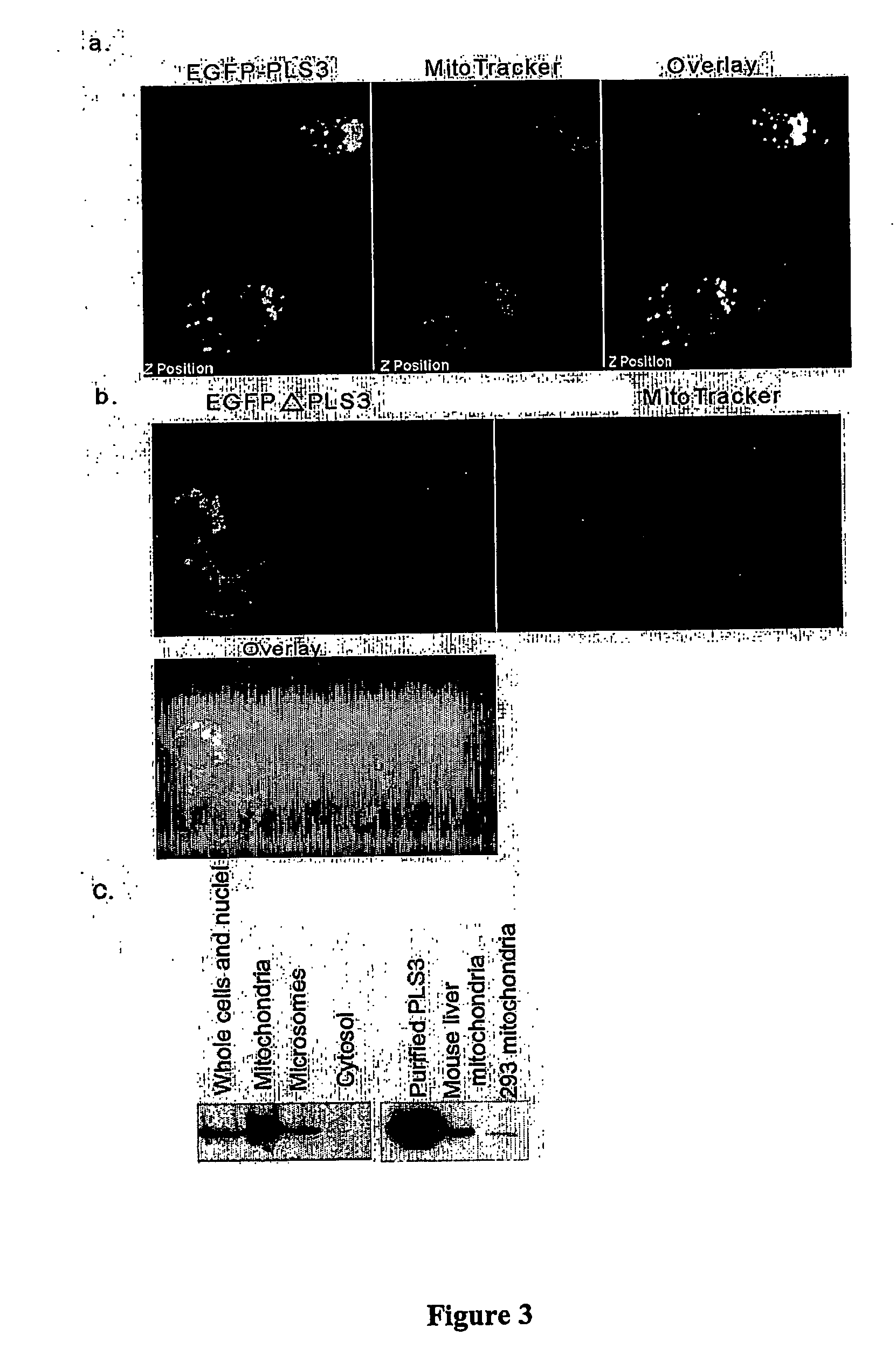Phospholipid scramblase 3
a phospholipid scramblase and phospholipid technology, applied in the field of phospholipid scramblase 3, can solve the problems of affecting the apoptosis of pls1, the phosphorylation of pls1, and the elusive effects of pls1, and achieve the effects of reducing the number of phospholipids
- Summary
- Abstract
- Description
- Claims
- Application Information
AI Technical Summary
Benefits of technology
Problems solved by technology
Method used
Image
Examples
examples
I. Phospholipid Scramblase 3 is a Downstream Effector of Cell Death Regulator Bcl-B
[0084] Cloning of PLS3 and Identification of Two Different Forms of Transcripts.
[0085] In order to understand the functions of Bcl-B, a yeast two-hybrid screen was performed to identify proteins that interact with Bcl-B. Since Bcl-B is most abundant in human liver (Lee et al. 2001), a yeast human liver MatchMaker cDNA library (Clontech, Palo Alto, Calif.) was used for this screening. After initial screening, seventeen true positive clones were identified. Three clones were identical to human phospholipid scramblase 3 (Wiedmer et al. 2000). Since the clone obtained lacked 5′ sequence, the full-length cDNA clone was identified (AW239215; GI:6571605, SEQ ID NO: 11) by searching the human EST database. The AW239215 clone was sequenced and it was noted that it is an alternatively spliced form compared with the cDNA cloned. The AW239215 clone contained 1722 nucleotides between the Eco RI cloning site and...
PUM
| Property | Measurement | Unit |
|---|---|---|
| Structure | aaaaa | aaaaa |
| Electrical resistance | aaaaa | aaaaa |
| Sensitivity | aaaaa | aaaaa |
Abstract
Description
Claims
Application Information
 Login to View More
Login to View More - R&D
- Intellectual Property
- Life Sciences
- Materials
- Tech Scout
- Unparalleled Data Quality
- Higher Quality Content
- 60% Fewer Hallucinations
Browse by: Latest US Patents, China's latest patents, Technical Efficacy Thesaurus, Application Domain, Technology Topic, Popular Technical Reports.
© 2025 PatSnap. All rights reserved.Legal|Privacy policy|Modern Slavery Act Transparency Statement|Sitemap|About US| Contact US: help@patsnap.com



